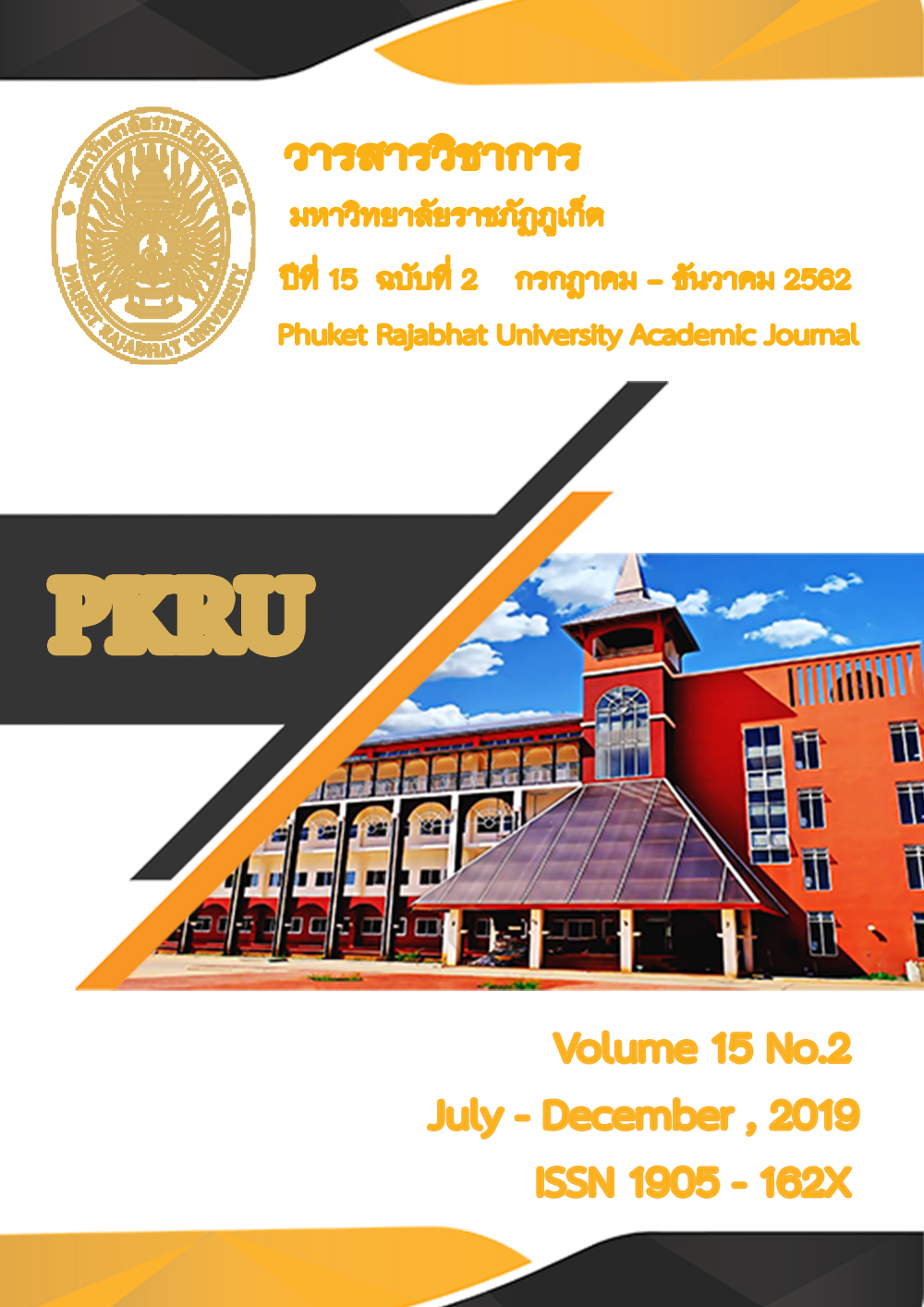Teaching English in Christian Schools in Three Southernmost Provinces
Main Article Content
Abstract
Christian Schools in Three Southernmost Provinces are private schools that under the Christian foundation are mainly based on the "Salaysian" curriculum which highlights on English subject. The purpose of the research aimed to examine in English instructional practices of Christian schools in three southernmost provinces for 7 aspects: curriculum condition, instructional problems, English instruction, materials, resources, learners and evaluation. The researchers investigated more for bottomless reasons and information by a qualitative study. An in-depth interview was employed and the samples of this study were selected via a purposive sampling. They were 12 English teachers, academic teachers, and head of English teachers from three private schools that under the Christian foundation. The research tool was the semi-structure interview. The analysis was content analysis. It was found that the important of curriculum and content problem were emphasis students to learn grammar for the final exam, they did not use English outside the classes, had no confidence to use English for communication, lots of assignments. Moreover, foreign teachers had no curriculum guideline and no change to design the curriculum. For Thai teachers, there were inadequate English teachers who had degree in teaching English, did not speak English, and had too much workload on documents. The internet speed needed to be improved. Furthermore, the unrest situation had an effect to the school’s learning hours by making the schools have to finish earlier. Thus, the curriculum and content of English learning must be improved. Therefore, learners are able to communicate in English as well as develop presents English teachers' potential. Finally, Office of the National Security Council must take action for the protection.
Article Details
The content and information published in the Phuket Rajabhat University Academic Journal represent the opinions and sole responsibility of the authors. The editorial board does not necessarily endorse or share any responsibility for these view.
Articles, data, content, images, etc., published in the Phuket Rajabhat University Academic Journal are the copyright of the Phuket Rajabhat University Academic Journal. Any individual or organization wishing to reproduce or utilize all or part of this material for any purpose must obtain prior written permission from the Phuket Rajabhat University Academic Journal.
References
Aymat, O. (1989). The Teaching of English in the People School of Puerto Rico. Dissertation Abstracts, 49 (11), 3290.
Chaisri, K. (2008). Current Situations and Problems of Teaching and Learning French in Secondary Schools in Phuket (Research Report). Phuket: Faculty of International Studies, Prince of Songkla University, Phuket campus.
Chalarak, N. (2016). State of English Instruction of Thai Teachers of Prathom Suksa 6, Lamphun Primary Educational Service Area 1. Far Eastern Journal, 10(2), 130-141.
Department of Academic Affairs, Ministry of Education. (2003). Guidelines for Student Development Activities in 2001. Bangkok: Kurusapa Printing Ladphrao.
Fitprayoon, N. (2004). Problems and Obstacles in Teaching and Learning Thai Language in the Context of Communication. [On-line]. Available : http://www.myfirstbrain.com/teacher_view.aspx?ID=20121 [2562, September 23]
Michael, R.F., Bart M.P., and Rosamonda. F. (2013). Towards Fully MultivariateAlgorithmic: Parameter Ecology and the Deconstruction of Computational Complexity. European Journal of Combinatorics, 34(3), 1-41.
Ministry of Education. (2017). National Education Plan. Bangkok: Office of the Education Council.
Office of the Basic Education Commission. (2008). Basic Education Core Curriculum B.E. 2551 (A. D. 2008). Bangkok: Kurusapa Printing Ladphrao.
Office of the National Economic and Social Development Board. (2017). The Twelfth National Economic and Social Development Plan (2017-2021). Bangkok: Office of the Prime Minister.
Phoophan, S. (2003). Basic Concepts of Designing and Developing Curriculums. Chiangmai: The Knowledge Center.
Plook Panya. (2012). A major drawbacks in learning English among Thai students. [On-line].Available : http://www.trueplookpanya.com/new/cms_detail/knowledge/14897/ [2562, September 23]
Pornpojthanamas, W. (2015). Thai Educational Problems: An Interview from Educational Stakeholders. Journal of Education, Thaksin University, 15(2), 48 - 55.
Prasertsuk, K. (2012, May 31th). ASEAN Insight. English Skills and ASEAN. Krugthep Thurakit, P.12.
Saritdikul, S. (1978). English Teaching Methods in Secondary Schools. Bangkok: Ramkhamhaeng University.
Sittichai, R. and Tudkuea, T. (2017). An Investigation of English Learning and Teaching Princess of Naradhiwas University Journal of Humanities and Social Sciences, (4)2,26-37.
Suratruengchai, W. et al. (2006). The Current Instructional Practices and Problems of Providing Instruction of Instructors at Burapha University. Education Journal, 17(2), 105-118.
Watcharanukulkiat, A., Udomrat, T., and Janbanjong, C. (2016). A Comparative Study of English Language Skills Development by English-Programmed Private Schools in India and Thailand. Journal of Education Naresuan University,18(4), 142-155.
Wutthiwongsa, N. (2014). Motivational Strategies: Enhancing English Language Skills. Executive Journal. 34(1), 89-97.
Zaid, M. A. (1994). Comprehensive analysis of the current system of teaching English as a foreign in the Saudi Arabian intermediate schools. Dissertation Abstracts International, 54(10), 3727-A.

